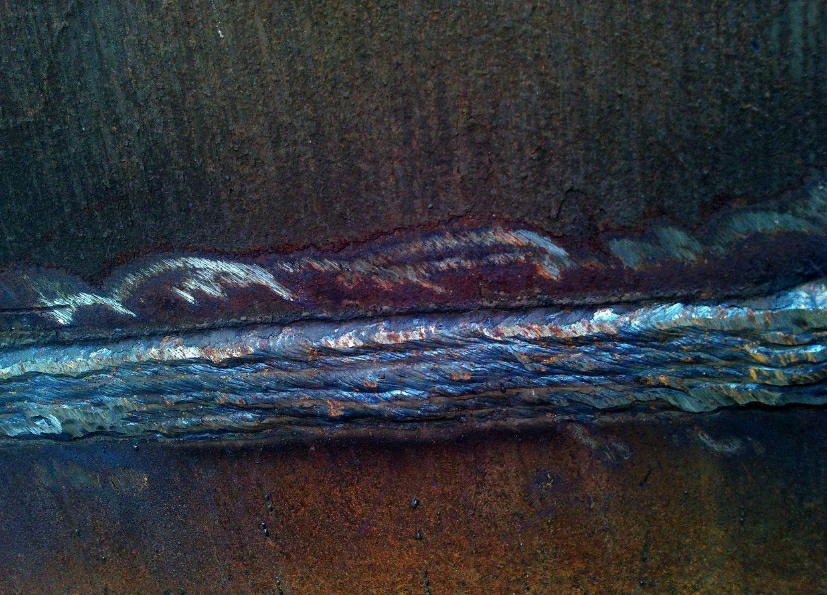Specialist Strategies for Preventing Weld Undercut Effectively
Specialist Strategies for Preventing Weld Undercut Effectively
Blog Article
Understanding the Art of Welding: How to Prevent Undercut Welding Issues for Flawless Manufacture Outcomes
By comprehending the root triggers of undercut welding and applying reliable strategies to prevent it, welders can raise their craft to new degrees of excellence. In the pursuit of perfect construction results, mastering the art of welding to prevent undercut problems is not simply a skill yet a need for those making every effort for excellence in their work.
Comprehending Undercut Welding

To stop undercut welding, welders ought to make certain correct welding specifications, such as adjusting the present, voltage, travel rate, and preserving the proper electrode angle. In addition, using the ideal welding method for the details joint arrangement is necessary. Employing weaving motions or backstepping strategies can assist guarantee proper weld steel deposition and minimize the likelihood of undercut formation. Routine evaluation of welds throughout and after the welding process is also crucial to catch any undercut early and make needed modifications to avoid further issues. Preventing weld undercut. By recognizing the reasons for undercut welding and executing precautionary actions, welders can achieve high-grade, structurally sound welds.
Reasons For Undercut in Welding
Recognizing the factors that add to damage in welding is necessary for welders to create premium, structurally sound welds. When the weld steel does not correctly fill the groove created between the base metal and the formerly deposited weld steel, undercutting occurs. Numerous factors can result in damage in welding. One usual reason is excessive warm input. Welding at heats for extended durations can lead to the base steel melting greater than desired, resulting in damage. Inadequate welding present or inaccurate welding speed can also add to undercut. Inadequate current might not give adequate warmth to melt the base and filler metals sufficiently, while extreme rate can stop correct fusion, causing undercut. Furthermore, incorrect electrode angles or wrong lantern control methods can produce areas of reduced weld steel deposition, promoting undercut. Recognizing these causes and carrying out correct welding methods can aid stop undercutting issues, making certain strong and durable welds.
Strategies to avoid Undercutting

To mitigate the threat of undercutting in welding, welders can use calculated welding strategies aimed at enhancing the high quality and honesty of the weld joints. One reliable approach is to readjust the welding specifications, such as voltage, present, and travel speed, to make certain proper warm input and deposition. Keeping an appropriate electrode i was reading this angle and making certain regular traveling rate can additionally help stop undercut. Additionally, using the appropriate welding method for the specific joint configuration, such as weave or stringer beads, can contribute to lowering undercutting. Preventing weld undercut.
Moreover, appropriate joint preparation, consisting of ensuring tidy base products devoid of pollutants and using the appropriate welding consumables, is crucial in preventing undercut flaws. Utilizing back-step welding methods and controlling the weld bead account can additionally help disperse warmth equally and lessen the risk of undercut. Regular inspection of the weld joint throughout and after welding, in addition to executing quality assurance steps, can aid in attending to and finding damaging problems promptly. By applying these techniques faithfully, welders can attain remarkable fabrication results with minimal undercut problems.
Value of Appropriate Welding Parameters
Picking and preserving suitable welding parameters is necessary for achieving successful welds with marginal defects. Welding criteria describe variables such as voltage, existing, take a trip rate, electrode angle, and securing gas circulation rate that straight affect the welding procedure. These parameters should be thoroughly readjusted based on the type of product being welded, its thickness, and the welding strategy employed.
Proper welding parameters ensure the correct amount of heat is used to thaw the base metals and filler material evenly. If the specifications are set as well high, it can lead to excessive warmth input, creating distortion, spatter, or burn-through. On the various other hand, if the parameters are too reduced, insufficient blend, lack of penetration, or damaging may take place.
High Quality Guarantee in Welding Workflow

Final Thought
In final thought, grasping the art of welding requires a detailed understanding of undercut welding, its reasons, and strategies to stop it. By making sure appropriate welding specifications and implementing quality control techniques, perfect fabrication outcomes can be accomplished. It is vital for welders to regularly pursue quality in their welding operations to avoid undercut problems and produce top quality welds.
Undercut welding, a common defect in welding processes, occurs when the weld metal does not appropriately fill the groove and leaves a groove or clinical depression along the bonded joint.To protect against undercut welding, welders must guarantee correct welding specifications, such as adjusting the present, voltage, traveling speed, and keeping the right electrode angle. Inadequate welding incorrect or existing welding rate can additionally contribute to undercut.To mitigate the danger of damaging in welding, welders can use critical welding methods intended at enhancing the top quality and integrity of the weld joints.In final thought, mastering the art of welding needs an extensive understanding of undercut welding, its reasons, and techniques to Clicking Here stop it.
Report this page